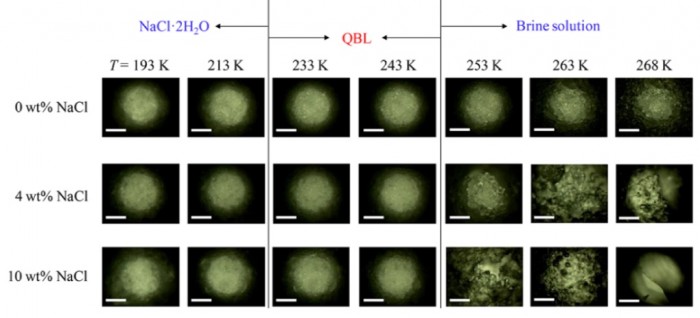“Role of Salts in Phase Transformation of Clathrate Hydrates under Brine Environments”
- Authors
D. Shin, J.-W. Lee, Y. Woo, M. Cha, Y. Lee, S.A. Chae, S.H. Kim, O.H. Han, J.-H. Yoon
- Journal
ACS Sustainable Chemistry and Engineering
Vol.6, pp.5003-5010, 2018.04 - DOI
Abstract
Although ion exclusion is a naturally occurring and commonly observed phenomenon in clathrate hydrates, an understanding for the effect of salt ions on the stability of clathrate hydrates is still unclear. Here we report the first observation of phase transformation of structure I and structure II clathrate hydrates using solid-state 13C, 19F, and 23Na magic-angle spinning nuclear magnetic resonance (NMR) spectroscopy, combined with X-ray diffraction and Raman spectroscopy. The phase transformation of clathrate hydrates in salt environments is found to be closely associated with the quadruple point of clathrate hydrate/hydrated salts and the eutectic point of ice/hydrated salts. The formation of the quasi-brine layer (QBL) is triggered at temperatures a little lower than the eutectic point, where an increasing salinity and QBL does not affect the stability of clathrate hydrates. However, at temperatures above the eutectic point, all hydrated salts and the QBL melt completely to form brine solutions, destabilizing the clathrate hydrate structures. Temperature-dependent in situ NMR spectroscopy under pressure also allows us to directly detect the quadruple point of clathrate hydrates in salt environments, which has been determined only by visual observations.












